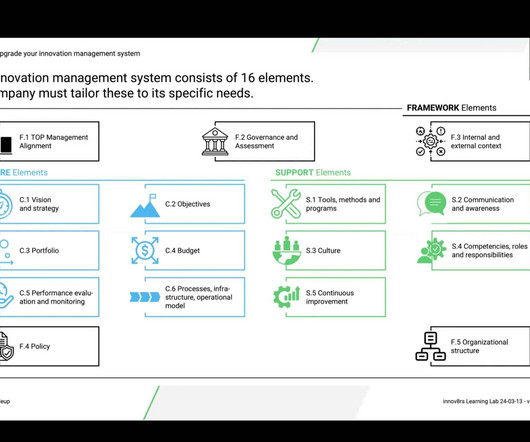It’s Time To Upgrade Your Innovation Management System
Innov8rs
MARCH 17, 2024
However, the business environment for corporate innovators has since shifted, and they are now being asked to do more with less. Following a more generic call to “stop innovation theatre”, the current assignment is to create new revenue streams that contribute to top- and bottom-line in the short term.























Let's personalize your content